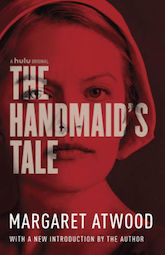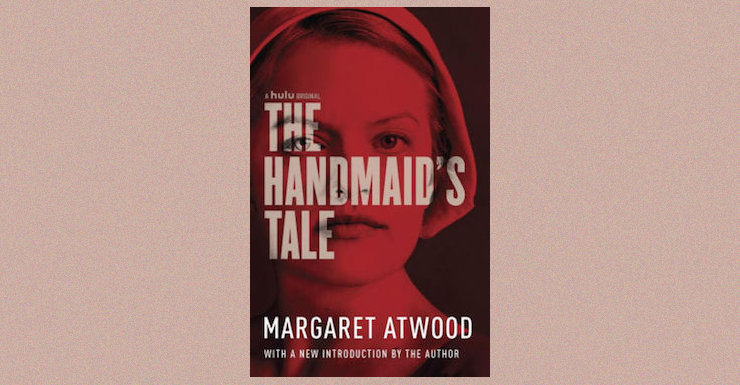Margaret Atwood’s The Handmaid’s Tale is one of my favorite books of all time. I could go on and on about her uncanny descriptive abilities, the precision in her word choice, or her storytelling chops. I probably would run out of space before I even had the chance to mention how much I admire the way she imbues deceptively simple prose with morally complex political overtones.
But, as much as I could fill this piece with my adoration for the story itself, I’m here to say that I found her new 2017 introduction uniquely compelling. In particular, I believe that her concerns about writing speculative fiction and the way she addresses these concerns are enlightening.
In the introduction, Atwood tells us that she established a series of rules to tackle her fear that she would fall victim to the usual tropes and trappings of the speculative fiction genre. The rules she established, and more importantly the manner in which she embraced a rule-centered writing process, should inform any writer’s process.
Atwood explains that she put off writing The Handmaid’s Tale for a year or two because writing speculative fiction seemed like a “risky venture.” Atwood describes the risks:
I’d read extensively in science fiction, speculative fiction, utopias and dystopias ever since my high school years in the 1950s, but I’d never written such a book. Was I up to it? The form was strewn with pitfalls, among them a tendency to sermonize, a veering into allegory and a lack of plausibility.
She then goes on to explain the rules she put in place prior to writing The Handmaid’s Tale—rules designed to help her avoid the pitfalls that concerned her most.
If I was to create an imaginary garden I wanted the toads in it to be real. One of my rules was that I would not put any events into the book that had not already happened in what James Joyce called the “nightmare” of history, nor any technology not already available. No imaginary gizmos, no imaginary laws, no imaginary atrocities. God is in the details, they say. So is the Devil.
Much like the prose in The Handmaid’s Tale itself, the rules in the introduction are terse but packed with meaning. Atwood wanted to confine herself using history, realism, and pragmatism as her key parameters. The specific writing prohibitions are clearly delineated—no sermonizing, no allegories, no implausibility, no ahistorical premises, no fantastical laws or atrocities, and no new technologies or gizmos. But the implications of these itemized rules extend far beyond any specific delineation.
Atwood was setting the broad boundaries for how she would construct her political system, how she would craft the social interactions between characters, and how she would control the overall setting. It wasn’t just that there would be no fancy gizmos or ahistorical premises. It was that in her imaginary garden she insisted that her toads be real. The nuts and bolts of her entire imaginary world needed to closely adhere to the history, traditions, and social and economic hierarchies of Western civilization, principally America’s biblical and puritanical roots. This conceptual framework allowed her to overcome her concerns.
Buy the Book


The Handmaid’s Tale
I think it’s important to note that even a writer as brilliant and brimming with imagination as Margaret Atwood needed rules to overcome her apprehension. But we should also recognize that these particular rules were tailor made for her. Surely Suzanne Collins’ imaginary garden would have a different set of toads and a different set of rules.
In writing my first novel, a dystopian novel like The Handmaid’s Tale, I didn’t have the benefit of reading Atwood’s introduction. I only recently came across the new introduction in rereading the latest edition of her novel. But for my next novel, I will most assuredly craft a set of Atwoodian rules to guide me. As a speculative fiction writer, many of Atwood’s specific rules appeal to me. But again, rather than the specifics, it’s her process that should appeal to any writer.
Atwood’s introduction teaches writers to: (i) identify their concerns, (ii) establish specific rules to overcome these concerns, and (iii) create a conceptual framework to guide larger decisions about setting. In creating imaginary gardens, writers are free to fashion toads of their choosing. Unlike Atwood’s toads, they may create unnaturally strange, artificial, or unrealistically whimsical toads. But whatever they choose, writers should create specific rules and conceptual frameworks that help them overcome their initial concerns.
 Jay Schiffman is a writer and entrepreneur committed to creating socially responsible businesses. Prior to starting his businesses, he was a practicing attorney, taught political science at NYU, and worked in the public and private sectors. He lives in New Jersey with his wife and children. Game of the Gods is his debut novel.
Jay Schiffman is a writer and entrepreneur committed to creating socially responsible businesses. Prior to starting his businesses, he was a practicing attorney, taught political science at NYU, and worked in the public and private sectors. He lives in New Jersey with his wife and children. Game of the Gods is his debut novel.











With the sole exception of “The Handmaid’s Taie” – and I will note that I met Atwood once and had her signed my hardcover first edition first printing copy of it – I am not a fan of her speculative fiction. Had she followed the same rules for “The Handmaid’s Tale” for her subsequent “Oryx and Crake” novels, I might have enjoyed those better, and I will note that I have grave reservations about them due to my prior training in evolutionary biology. In lieu of her advice, I prefer the “rules” set by William Gibson, who has often remarked that he prefers using what he has dubbed the “tool kit of science fiction” in creating his speculative fiction.
Marianne Moore deserves credit for that “imaginary gardens with real toads in them” line.
The procedural aspects of setting up ground rules is interesting, and we can’t argue against the success of the book. But I’m one of those who think she’s unnecessarily derogatory of genre fiction. See also, Vonnegut. Such authors benefit from a strong interest or support of genre readers, then they disavow those readers’ tastes. Much of it can be crap (see Sturgeon’s Law) or easily digested comfort reading, but the good stuff can be used as models without being condescending.
@@@@@ Sunspear, she has been extremely derogative of genre fiction, especially speculative fiction by long-time writers in the genre. (Though I once heard a rather interesting defense of her from a friend of hers visiting from Toronto inside Strand Bookstore early one night, in which he claimed that his friend “Peggy” was quite interested in and quite supportive of speculative fiction.) I know she has mistakenly asserted – and I believe that Michael Swanwick wrote a terse, but effective rebuke – that fantasy arose out of science fiction, when, quite the contrary, the reverse is true. I will note that I regard her “Oryx and Crake” novels as among the worst examples of world-building I have seen from a mainstream literary fiction writer who has written speculative fiction, in stark contrast with the likes of David Mitchell and Kazuo Ishiguro, among others.
*blink* I normally hate and avoid reading dystopic and/or post-apocalyptic fiction (or nonfiction). But the MaddAddam Trilogy (Oryx and Crake, and its sequels) lured me in with wildlife and humor, killed my optimism softly with fun science in a highly complex and horribly believable world, and managed to leave me glad I had read it even as its foretold horrors have been unfolding in real life. They don’t depend entirely on technology that existed in such a form at the time of writing, or even now — in our world, thermal depolymerization* hasn’t been industrially successful and genetic engineering isn’t half as interesting — but follow possible trajectories for its development.
* https://en.m.wikipedia.org/wiki/Thermal_depolymerization
Agreed, but I think it’s just as important to note that approaching a novel by constructing rules for its universe (or, rules for the construction of its universe, even) is part of what makes her such a brilliant and imaginative writer.
I’ve often said that all fiction writing is difficult, and speculative fiction especially so, because by definition anything you write is true. It’s your universe, you get to decide what happens. But what happens still has to be consistent enough that your readers can learn the rules of how it operates. (They can’t assume the rules of their universe apply, after all.) If it isn’t, they’ll notice, and they’ll revolt. The only thing keeping them at bay is the author’s (and their editors’) own attention to detail.
That’s why there’s an entire Stack Exchange Q&A site specifically on the topic of Worldbuilding. It’s also why Philip K. Dick famously opined on the nature of reality itself with “How to Build a Universe That Doesn’t Fall Apart Two Days Later”. Great fiction writers tend to spend a lot of time thinking about reality, what it is, and what it means. After all, when you’re responsible for creating dozens of them, it tends to come up.
@@@@@ 5, I am greatly troubled by the poor world building and science undertaken by Atwood in her MaddAddam Trilogy (“Oryx and Crake” novels), especially given my prior background in invertebrate paleobiology and evolutionary ecology. This stands in sharp contrast with what Michael Swanwick did in his great time-travel speculative fiction novel “Bones of the Earth”, for which he listened to professional dinosaur paleobiologists as he was conducting his research for this novel, which I regard as scientifically more accurate and more readable than Michael Crichton’s “Jurassic Park” ones.
Eh, I have dubious taste in books, especially this kind. I despise Fahrenheit 451 and the dystopia section of Cloud Atlas, among others. And despite being a biology nerd, I have a thing for “mad” biologists, not to mention environmentalist cults. I burst out laughing at the Bible-inspired crossbreeding of lions and sheep. (I get more irked by inaccurate portrayals of modern modern marine biology, but consider the fantasy book Deep Wizardry the Bestest Most Beautiful and Perfect Novel EVAR despite its multitude of non-obvious inaccuracies because it’s just sooo good).